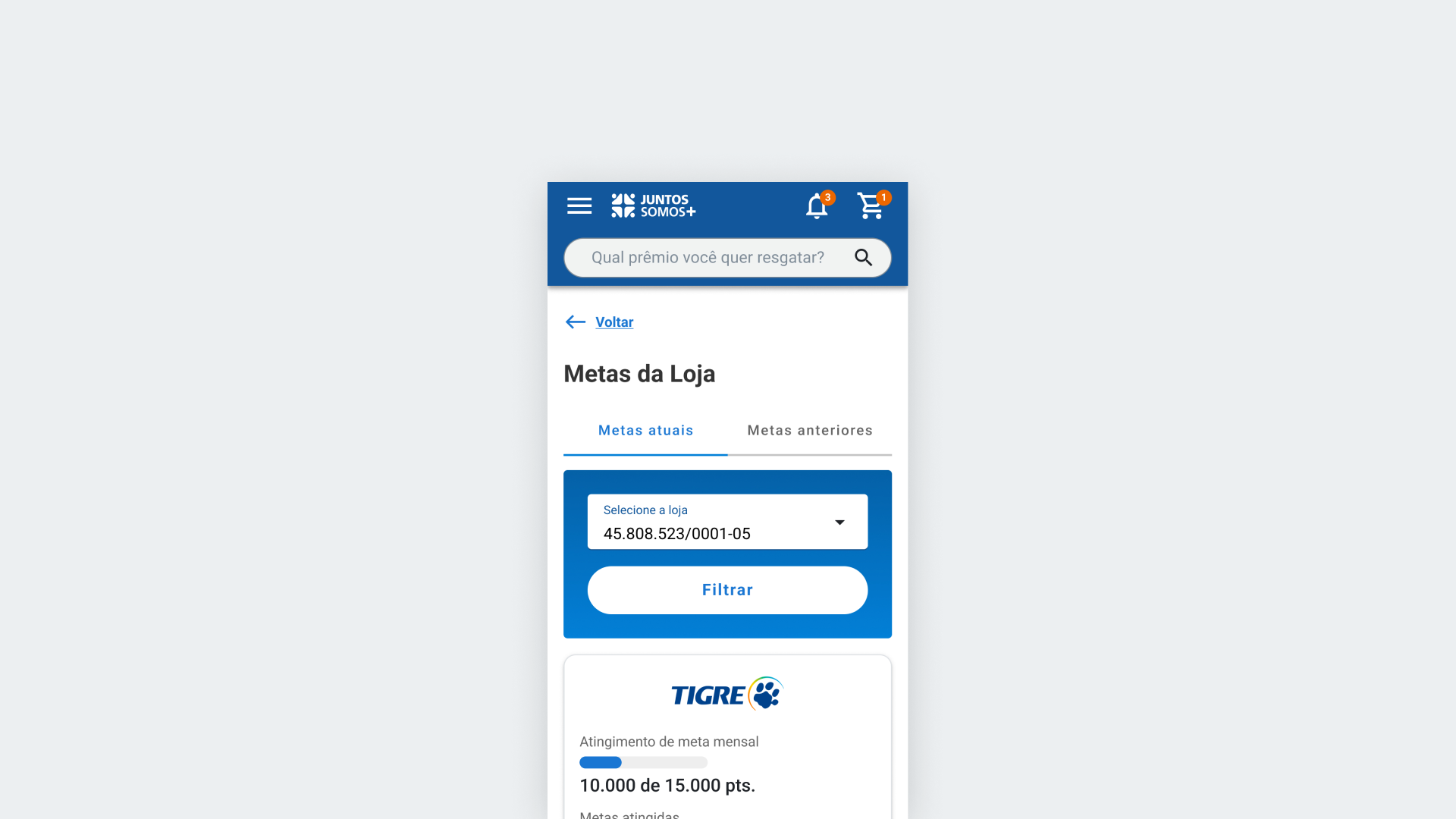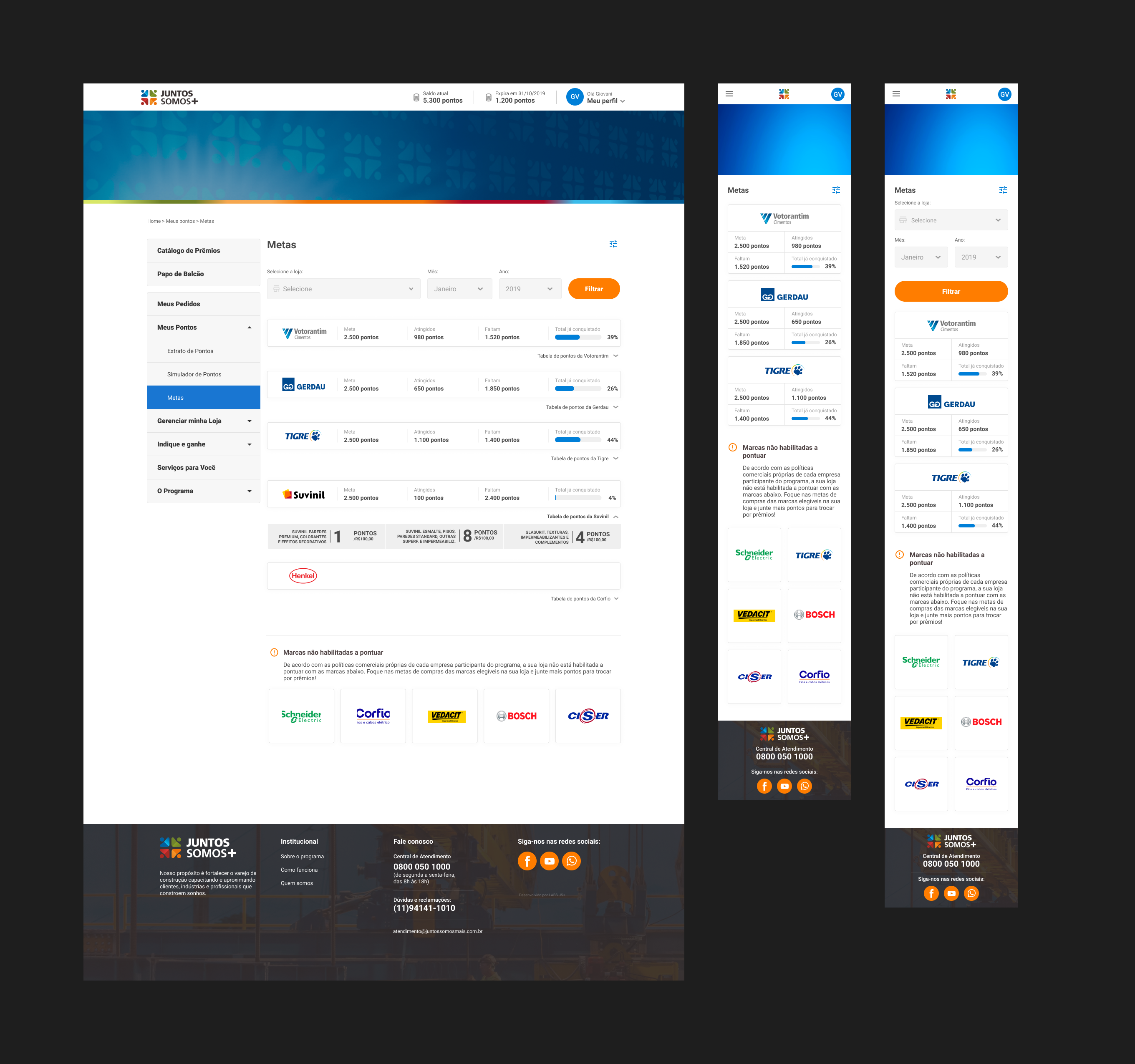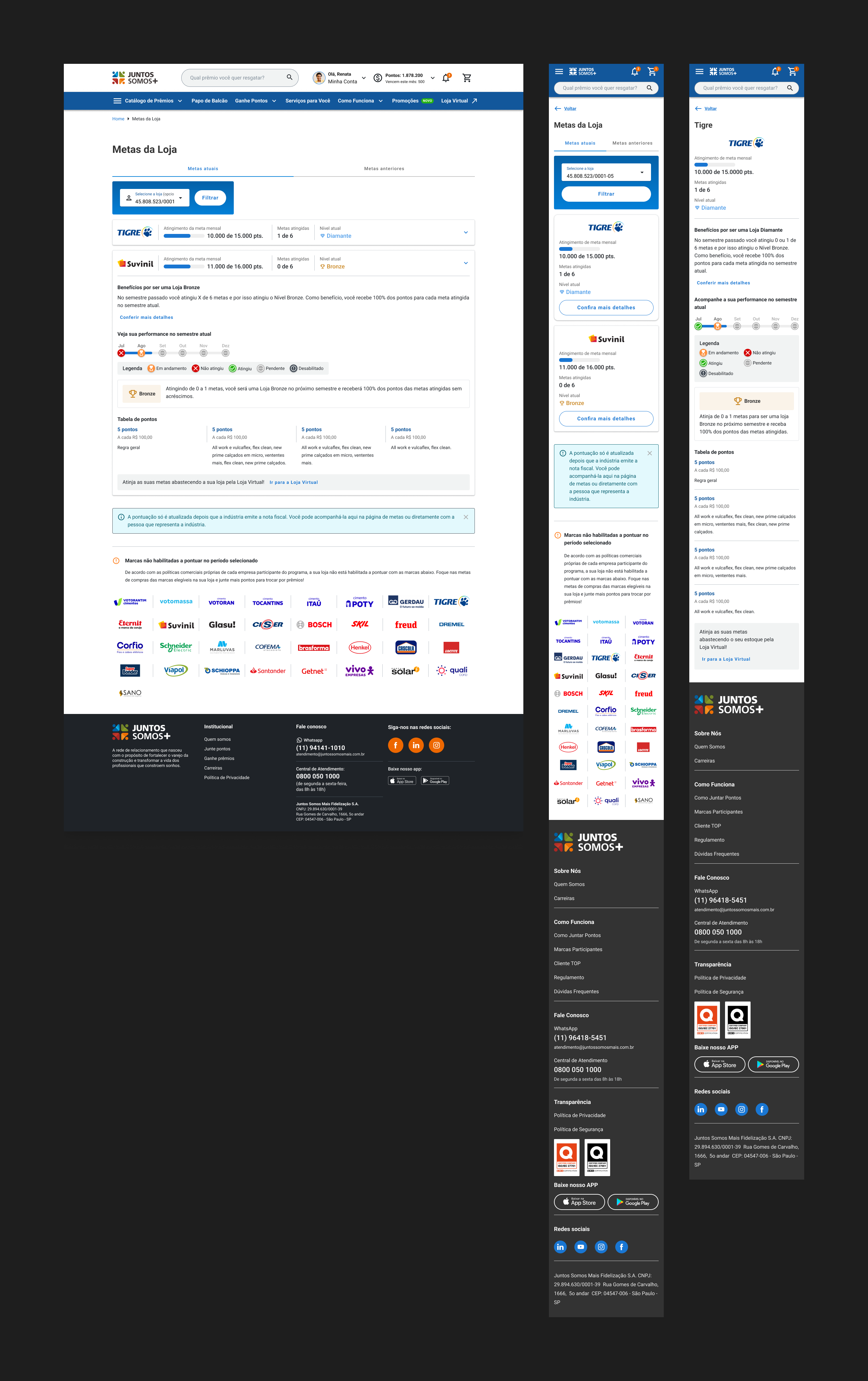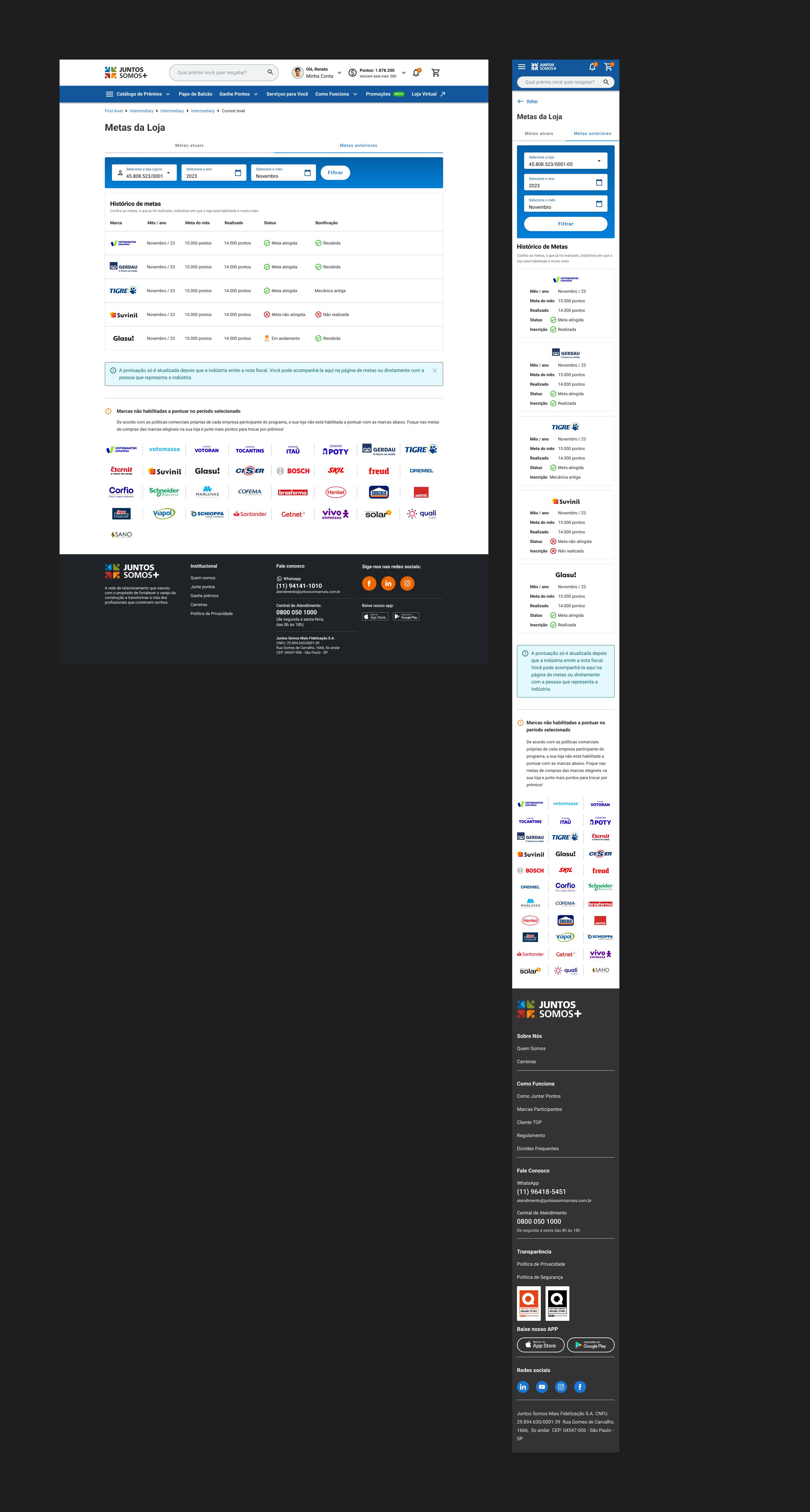Enhancing engagement and clarity: revamping the JS + loyalty program

Situation
Juntos Somos Mais is a loyalty program connecting store owners and industries in the building materials market. Participants earned points by hitting sales targets set by program partners. However, participants often felt confused: the goals and rewards structure wasn’t clear, and there weren’t enough features to motivate consistent engagement.
Task
I took full ownership of redesigning the goals page to address these issues. My goals were:
- Simplify the goals and rewards structure so participants could easily understand progress.
- Introduce gamification features that motivated ongoing participation.
- Create a clearer, more engaging user experience that aligned with program objectives.
Action
I approached the challenge through research, ideation, design, and testing:
- Research:
- Conducted a CSAT survey on the program page to gather user frustrations and suggestions.
- Benchmarked other loyalty programs to identify best practices in clarity and motivation.
- Gathered insights from the consulting team on participant feedback.
- Collaborated with the product manager to refine the gamification concept into a tier-based system.
- Ideation:
- Simplified information architecture to make goals easy to find.
- Introduced a tier-based system where higher performance unlocked bonus points for the next semester.
- Design & Implementation:
- Created wireframes and prototypes that emphasized clarity and engagement.
- Worked closely with engineers to ensure technical feasibility and usability.
- Conducted QA testing before launch to refine details and fix usability issues.
- Testing & Iteration:
- Ran follow-up CSAT surveys post-launch.
- Incorporated participant feedback, making layout adjustments to simplify navigation.
Result
The redesign delivered immediate improvements:
- Improved participant satisfaction, confirmed by higher CSAT scores.
- Boosted engagement: gamification elements encouraged participants to check back and hit their targets.
- Positive feedback: participants found the program easier to understand and more motivating.
The old interface
The old interface was cluttered and confusing. Participants struggled to understand their progress and didn’t feel motivated to check back regularly.

The new interface
The new interface changed the game. Here’s what stood out:
- A tier-based gamification system that made earning points more rewarding and visible.
- Clear, streamlined navigation that highlighted current goals, upcoming challenges, and rewards.
- A modern, engaging design that made participation fun and intuitive.
Current goals tab

Latest goals tab

Reflection and learnings
- Clear information architecture is critical: when users don’t understand, they disengage.
- Gamification can drive real engagement when tied to meaningful rewards.
- Direct user feedback ensures solutions address actual problems and not assumptions.
Future opportunities
- Personalized dashboards for participant-specific insights.
- Deeper analytics to show progress trends over time.
- Expanded gamification with more tiers or exclusive rewards for long-term engagement.